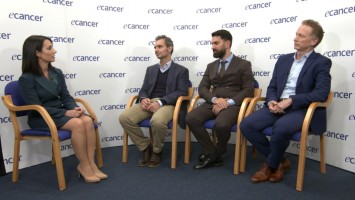MD Anderson has been involved with WIN since the beginning. Dr Mendelsohn, our former President at MD Anderson, is the Chairman of the WIN consortium and was just elected to another two year term in that role. Together with the Institut Gustave Roussy, we initiated this exciting work and the consortium has grown now over the last several years. It includes many institutions that are also part of our GAP network, our Global Academic Programs network, but then there are also other kinds of partners here in WIN that we don’t have.
What research are you doing at MD Anderson?
The GAP network is an academic network so we do research, education, exchanges. On the research side we have a very broad portfolio of seeded projects that include some clinical trials and also elements of personalised medicine but it goes beyond that. So we also do work in palliative care and integrated medicine; we do very fundamental laboratory based research, patient-oriented research, epidemiology and so on. So we see WIN as an ideal complement to that: the GAP network is very open platform, broad in its intentions; WIN is a very strategic focussed engagement around personalised cancer therapy so we feel the two really balance each other very well and continue to see tremendous value in being part of the WIN consortium.
What is your role in collaborating at WIN?
Collaboration is key in modern cancer research, WIN was created in acknowledgement of that fact, especially in personalised cancer therapy where as you increasingly define the cancer on its molecular basis you increase your impact on the patient but at the same time you also keep shrinking the number of patients eligible for any one particular medicine. So that’s why we really need to work together with centres across the world so that we can accumulate the patients. So collaboration is critical. It’s really in our blood in academia and in the GAP network we do this very naturally on an academic basis. What’s exciting about WIN, there are many things that are exciting about WIN but one of them is that this consortium includes partners beyond academia and that’s really unique. So the team, Vladimir Lazar and his colleagues, have been very effective at bringing in technology partners, pharma partners and also non-profits and even Blue Cross Blue Shield. So we really have a lot more players here at the table and so forming collaborations here really takes you to a whole new level.
Can you give an example of where this collaboration has given good results?
WIN’s work is really just on the cusp of making a major impact. As many people will readily acknowledge, and we’ve certainly made that experience also in the GAP network, the execution on clinical trials across borders is very complicated and regulatory intensive and actually that’s one thing that I hope that the WIN consortium tackles down the road is trying to dismantle some of that, what we believe to be, excessive burden of regulation that really slows down research. So the first trials that WIN is working on are just emerging now; the WINTHER trial is really gaining steam and some great new ideas have been talked about that really emphasise the strength of our consortium. I mentioned pharma partners being there, that’s very exciting, and technology partners so that allows us to very quickly deploy trials where you need the technology to assess the patient’s tumour, to do the molecular characterisation; you need the pharma partners to bring the agents that target the pathways that are revealed and then you need the clinical partners and the academic partners to have the patients and run the trial. So I think in the next year or two you’re going to see some really exciting results coming out and we shared some interesting and exciting new things in the business meeting yesterday. So those are a little early to talk about publically but we’re very excited.
Can you tell us about the GAP project?
In GAP we currently have a seed fund mechanism and we have actually sixty different projects running in that. It’s impossible for me to describe this, even when I present the programme formally I just put up a word cloud with key words from it, from all the projects. But it’s really a broad spectrum of research, some very exciting things have come out of it already, just some great basic biology, some comparisons of sequencing projects with, for example, head and neck cancer in different countries where different environmental factors have an impact on the tumour. We’re just beginning to see now the first major papers coming out and some additional grants. It’s really a seed fund programme so the idea is that it gets things started that then grow into bigger things. What’s exciting about it, too, is that because most of the projects involve multiple institutions we’re really bringing the network closer and closer together and getting people to connect. We have an annual conference where everybody gets together and now, as I walk around that conference, we had it just a few weeks ago in Seoul, Korea, I see people who know each other and who have gotten to know each other and really become close collaborators. So that’s really exciting.








